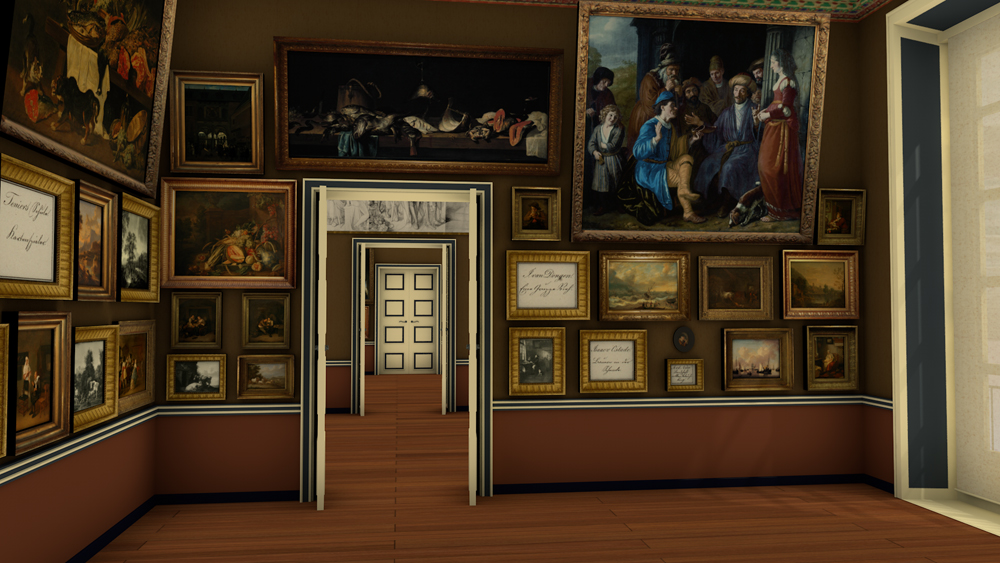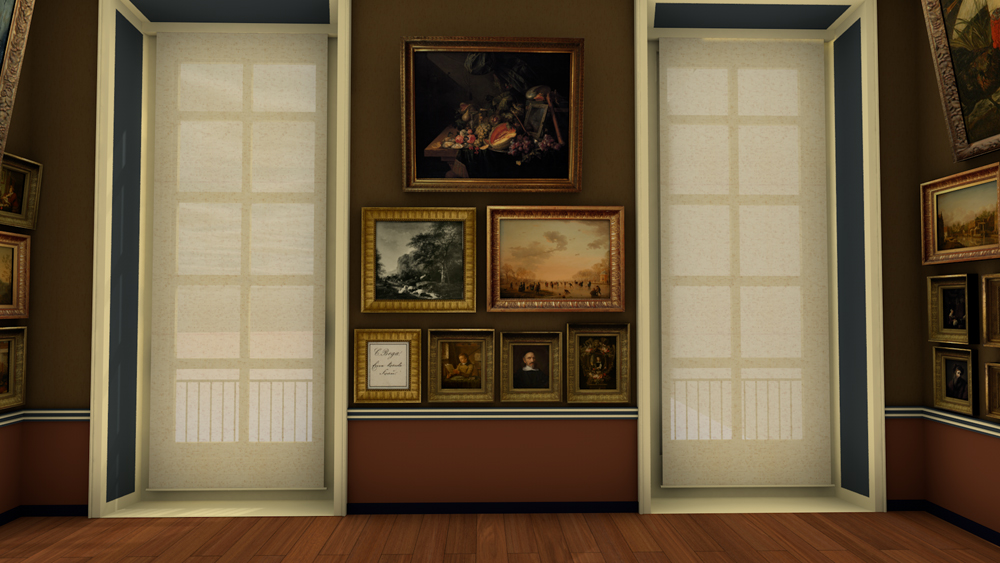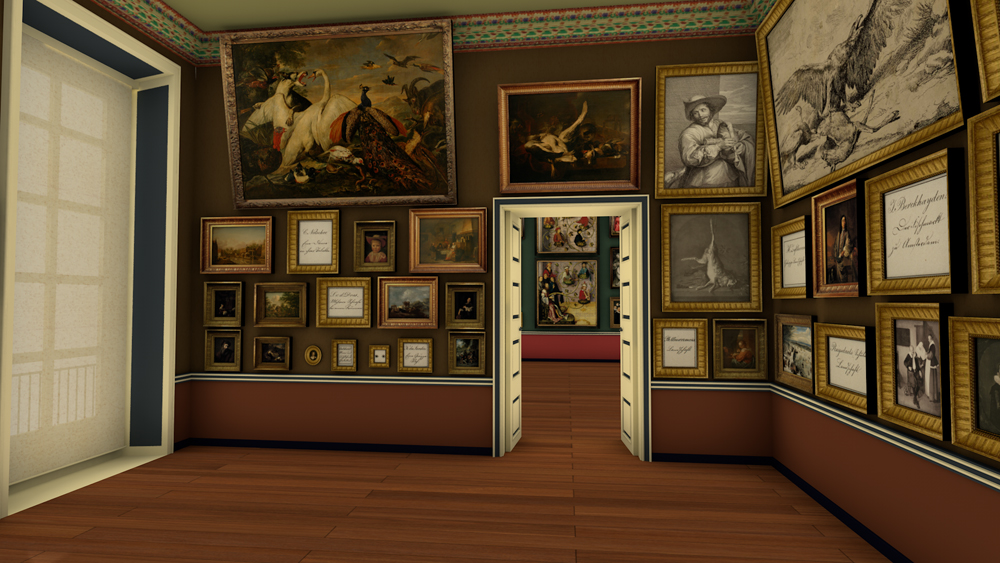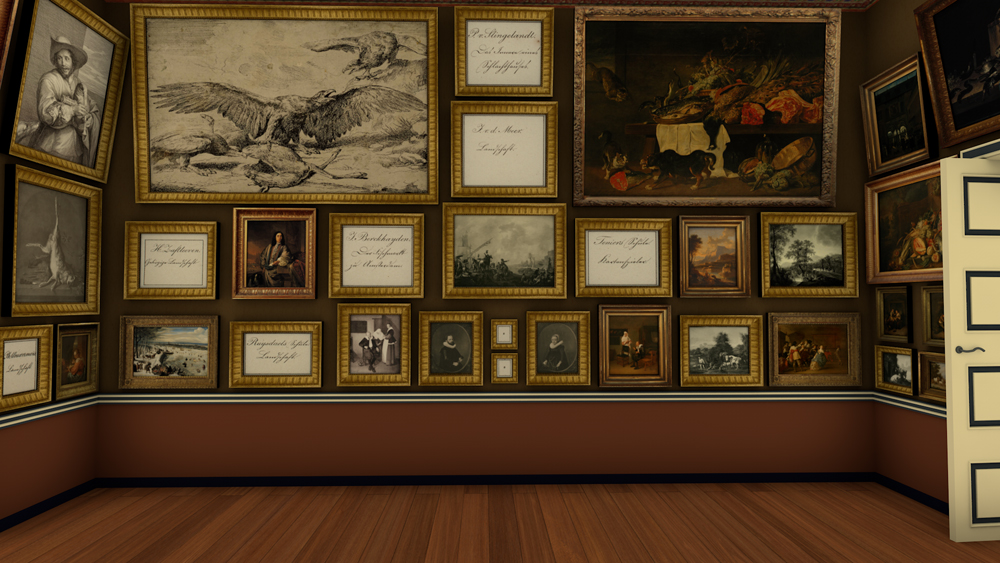1833 First additional room
Second-tier
Dutch and Flemish artists
In the side wing, paintings could be put on display in a manner that did not necessarily follow the art historical presentation in the skylight rooms. Dutch and Flemish paintings were exhibited in the first room. These had formed a particular focal point in the collections of Johann Friedrich Städel and his contemporaries.
On first glance, hardly no principle of presentation can be detected, except for the effort to arrange as many paintings as possible in a decorative, symmetrical manner. Coming from the Early German room, the visitors would first see the sole great Dutch history piece, “Boaz Assumes the Legacy of Elimelech” (inv.-no. 581). Its painter, Jan Victors, was at the time considered to have been a pupil of Rubens. Other large hunting pieces and still lifes, hung in the upper register, must have made quite an impression in this relatively small space. Those visitors interested in individual comparisons had the opportunity to study a variety of landscapes and animal pictures below Victors’ painting. However, no attempt had been made to realise the symmetrical hanging to such an extent that motivic correspondences were established as well. This can be seen on the long sidewall: a Flemish view of Antwerp was mirrored with a “Happy Company”, while a southern portrait was juxtaposed with a southern landscape. Perhaps the priority was to show contrasts, in order to show the variety found in Dutch and Flemish painting.






